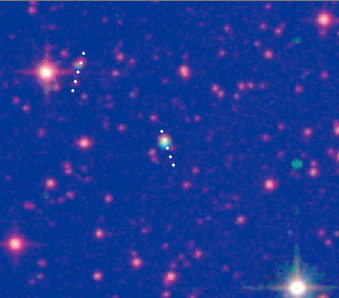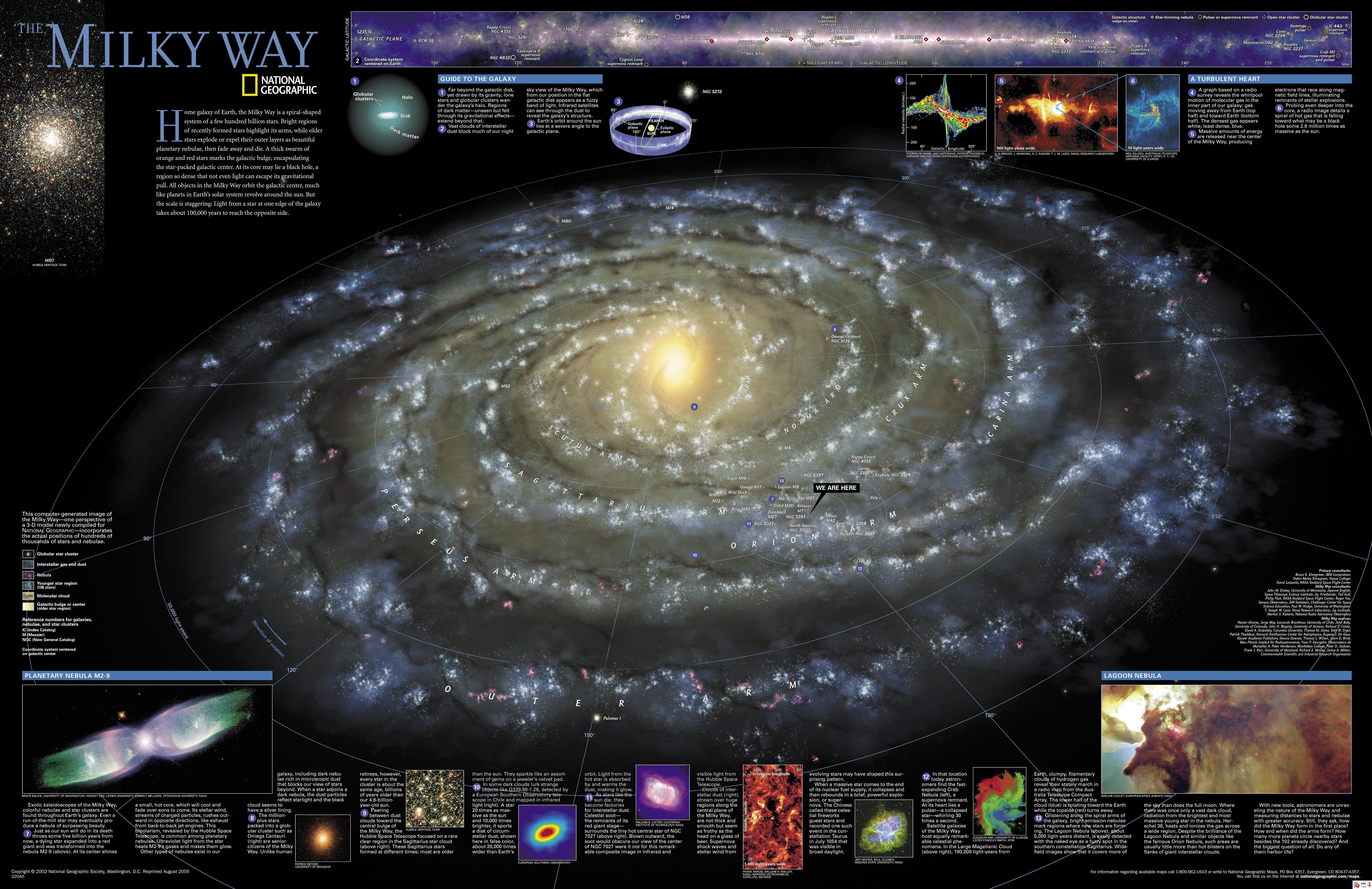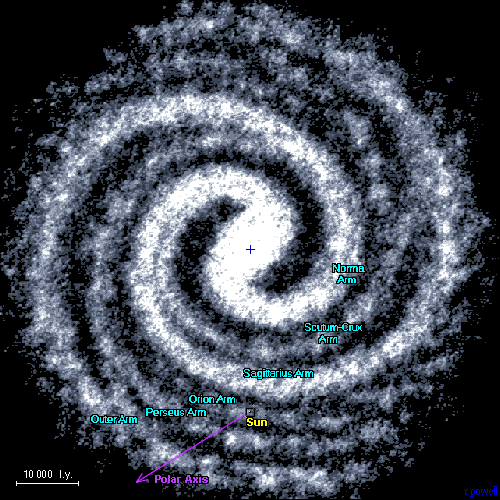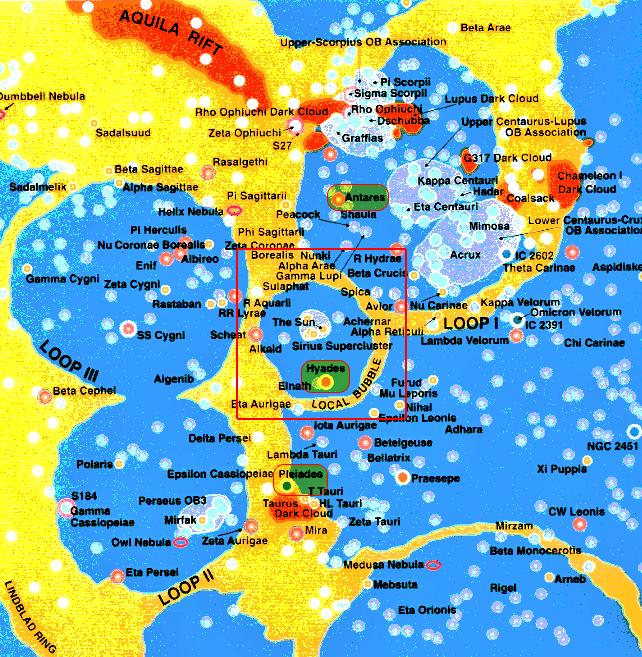It looks like you're using an Ad Blocker.
Please white-list or disable AboveTopSecret.com in your ad-blocking tool.
Thank you.
Some features of ATS will be disabled while you continue to use an ad-blocker.
share:
a reply to: ngchunter
I appreciate your detailed & thorough responses, which clearly involved a good amount of effort. I wonder though, what is the explanation for the apparent rapid movement of the star in question, in the original .gif image? In that image it was moving, relative to the other moving star which is the subject of this thread, at roughly the same pace, therefore quite speedy by anyone's reckoning...
What is the explanation for this apparently rapid movement of a second star, which you have located & verified with other sources? Nobody has actually addressed the issue of its movement, though clearly you seem to have established its identity (I have to go by faith in you on this one, as I don't have the requisite astronomy knowledge to verify your work).
Many thanks for any explanation you may be able to offer, this really does intrigue me.
I appreciate your detailed & thorough responses, which clearly involved a good amount of effort. I wonder though, what is the explanation for the apparent rapid movement of the star in question, in the original .gif image? In that image it was moving, relative to the other moving star which is the subject of this thread, at roughly the same pace, therefore quite speedy by anyone's reckoning...
What is the explanation for this apparently rapid movement of a second star, which you have located & verified with other sources? Nobody has actually addressed the issue of its movement, though clearly you seem to have established its identity (I have to go by faith in you on this one, as I don't have the requisite astronomy knowledge to verify your work).
Many thanks for any explanation you may be able to offer, this really does intrigue me.
originally posted by: ngchunter
I pulled these images from POSS1 and 2. So the star moving in the middle is Scholz's star. What's the other one next to it? It seems to have a very similar high amount of proper motion, so it's probably relatively close like Scholz's. Is it related? It's not the brown dwarf binary if Wikipedia is accurate; that's supposed to be only 0.8 AUs from the primary.
Great observation!
If by next to it you mean around 76 arc seconds to the upper left of on the image above then that is 2MASS J07200708-0845589:

2MASS J07200708-0845589 is unrelated to Sholz's star. It's a relatively bright (KS=12.8 mag) high proper motion star of spectral class M1 (red dwarf).
It is around 34 light years away.
edit on 22-2-2015 by JadeStar because: (no reason given)
originally posted by: FlyInTheOintment
a reply to: ngchunter
I appreciate your detailed & thorough responses, which clearly involved a good amount of effort. I wonder though, what is the explanation for the apparent rapid movement of the star in question, in the original .gif image? In that image it was moving, relative to the other moving star which is the subject of this thread, at roughly the same pace, therefore quite speedy by anyone's reckoning...
What is the explanation for this apparently rapid movement of a second star, which you have located & verified with other sources? Nobody has actually addressed the issue of its movement, though clearly you seem to have established its identity (I have to go by faith in you on this one, as I don't have the requisite astronomy knowledge to verify your work).
Many thanks for any explanation you may be able to offer, this really does intrigue me.
It's another high proper motion star, about 34 light years away. See the above post. High proper motion stars are common in the neighborhood (neighborhood is defined as under 100 light years) of the solar system.
Tau Ceti is perhaps one of the most famous high proper motion stars.
To learn more about proper motion, see this wikipedia entry.
See also Radial Velocity and Parallax
edit on 22-2-2015 by JadeStar because: (no reason given)
originally posted by: Soylent Green Is People
originally posted by: Indigent
... so cool imagine if at that time the system had life and planed a visit to the place they would near miss, less than 1 light year away makes ancient aliens not so impossible, if all the millions things that have to happen did happen of course, but cool anyways...
Yeah, but 70,000 years ago would have been really, really ancient aliens.
The story of the Anunnaki, the Nazca Lines, India's 'Vimanas', the pyraminds, Easter Island Moai, the Dogans, etc. would have all been "recent history" compared to 70,000 years ago.
There are stories of some gold mines in Africa that are 250,000 years old or so...
Source
and that aliens (Anunnaki, I think) used to run them. I remember reading about that on here once. Anyway, alien civilizations are probably a lot older than 70,000 years.
edit on 22amSun, 22 Feb 2015 11:38:10 -0600kbamkAmerica/Chicago by darkbake because: (no reason given)
edit
on 22amSun, 22 Feb 2015 11:40:09 -0600kbamkAmerica/Chicago by darkbake because: (no reason given)
edit on 22amSun, 22 Feb 2015
11:40:27 -0600kbamkAmerica/Chicago by darkbake because: (no reason given)
originally posted by: Baddogma
a reply to: Hijinx
"...never visible."
Says the 'experts' ... pffft... I say the light pollution was much less back then
It wouldn't matter. Human eyes can only see down to about a magnitude 7. This star is much, much dimmer than that, it's an 18 magnitude star (the higher the number, the dimmer the star).
But thank you for the clarification... and I wonder what 'em effects' it produced that could have been seen (according to the article)? Any astronomers or generally informed savants wanna illuminate that?
It could have had some magnetic outbursts which would cause it to brighten. Though M-dwarfs (red dwarfs) are small dim stars they are also prone to flaring. A lot would depend on the age of Scholz's star because this flaring is more common in younger M-dwarfs than older ones like Kapteyn's star.
edit on 22-2-2015 by JadeStar because: (no reason given)
If anyone has any other questions about high proper motion stars let me know. The solar neighborhood is kinda my specialty. One thing to note is that
a significant number of small, cool stars within 250 light years have yet to be discovered but we know they should be there statistically so do not
be shocked if we find other small dim, red dwarfs and brown dwarfs in the solar neighborhood. This is an ongoing process of discovery!
Solar neighborhood is defined as the red square within the red square on the third (bottom) image:



That red square within the red square above represents a 400 light year by 400 light year square which is the Solar Neighborhood. That is an area encompassing around 930,000 stars and approximately 186,000 habitable zone or "goldilocks zone" planets.
Solar neighborhood is defined as the red square within the red square on the third (bottom) image:



That red square within the red square above represents a 400 light year by 400 light year square which is the Solar Neighborhood. That is an area encompassing around 930,000 stars and approximately 186,000 habitable zone or "goldilocks zone" planets.
edit on 22-2-2015 by JadeStar
because: (no reason given)
originally posted by: JadeStar
originally posted by: ngchunter
I pulled these images from POSS1 and 2. So the star moving in the middle is Scholz's star. What's the other one next to it? It seems to have a very similar high amount of proper motion, so it's probably relatively close like Scholz's. Is it related? It's not the brown dwarf binary if Wikipedia is accurate; that's supposed to be only 0.8 AUs from the primary.
Great observation!
If by next to it you mean around 76 arc seconds to the upper left of on the image above then that is 2MASS J07200708-0845589:
2MASS J07200708-0845589 is unrelated to Sholz's star. It's a relatively bright (KS=12.8 mag) high proper motion star of spectral class M1 (red dwarf).
It is around 34 light years away.
Thanks! I concur, good find!
simbad.u-strasbg.fr...
Thanks for your help!
a reply to: Indigent This is a fantastic find. Consider confluences. ~70KYA, there was a bottleneck in human population.
Astronomical models are far more precise than mitochondrial DNA dating. Unfortunately. that dating was used to date the bottleneck and it is
imprecise. Maybe the astronomical calculations can update estimated evolutionarily period of the M-DNA as that tree was used to update carbon-14
dating. And maybe we didn't almost die out with only 5,000 breeding pairs remaining, but maybe we are homo sapiens sapiens V2, which STARTED 70KYA.
Neanderthals were not nearly wiped out by what happened in that episode, so why do mainstream anthropologists think we were?
Between V1 and V2, we changed to be worried about the future, so to speak, and plan things out quickly in our minds. Other physical changes accompanied, but the key changes were in mental processing. If I won the lottery, I'd spend the rest of my life collecting data on this and building physics-based models.
Typically, a radiation event scrambles M- and N- DNA. What radiological impact would happen when the star passed close by? Teaser question......
Between V1 and V2, we changed to be worried about the future, so to speak, and plan things out quickly in our minds. Other physical changes accompanied, but the key changes were in mental processing. If I won the lottery, I'd spend the rest of my life collecting data on this and building physics-based models.
Typically, a radiation event scrambles M- and N- DNA. What radiological impact would happen when the star passed close by? Teaser question......
originally posted by: ngchunter
originally posted by: JadeStar
originally posted by: ngchunter
I pulled these images from POSS1 and 2. So the star moving in the middle is Scholz's star. What's the other one next to it? It seems to have a very similar high amount of proper motion, so it's probably relatively close like Scholz's. Is it related? It's not the brown dwarf binary if Wikipedia is accurate; that's supposed to be only 0.8 AUs from the primary.
Great observation!
If by next to it you mean around 76 arc seconds to the upper left of on the image above then that is 2MASS J07200708-0845589:
2MASS J07200708-0845589 is unrelated to Sholz's star. It's a relatively bright (KS=12.8 mag) high proper motion star of spectral class M1 (red dwarf).
It is around 34 light years away.
Thanks! I concur, good find!
simbad.u-strasbg.fr...
Thanks for your help!
That's what I'm here for. You can return the favor when I have a question about an NGC, distant nebula or extragalactic object.
For the record, there appears to be another (much dimmer) star in the image posted by JadeStar that moves position. It is located just above the
"bright blob star" (for want of a better term) to the upper centre of the image, and it appears to be moving in the opposite direction to the other
two stars.
originally posted by: Mogget
For the record, there appears to be another (much dimmer) star in the image posted by JadeStar that moves position. It is located just above the "bright blob star" (for want of a better term) to the upper centre of the image, and it appears to be moving in the opposite direction to the other two stars.
There are a number of stars in the area with detectable proper motion:
h.dropcanvas.com...
originally posted by: radial soliton
Typically, a radiation event scrambles M- and N- DNA. What radiological impact would happen when the star passed close by? Teaser question......
For a small M-dwarf star like this one, there would not have been any radiological impact at the distance it passed us by.
There are some objects which at this distance might have had an effect. A neutron star is one. A compact x-ray source (like from a small black hole) might be another.
BTW: There was a National Geographic Channel show which dealt with an (unlikely) scenario where Earth finds out that a neutron star will pass through our solar system in 70 years. While the scenario is unlikely the science in this is sound:
edit on 23-2-2015 by JadeStar because: (no reason given)
originally posted by: wildespace
originally posted by: Wolfenz
originally posted by: wildespace
originally posted by: Wolfenz
Scholz Star A Rogue Star is a RED Dwarf Star
There is no data to suggest that it's a rogue star. If there is, let's see it.
WOW..
Type:
Scholz Star Rouge Star Data
in your Preferred Browser
I Use FireFox most of the Time .. with Google
Find some Legit Sites like University's, Observatory's, Affiliation with NASA etc...
Let Me Know how it goes!
I didn't find any science papers identifying that star as a rogue star (as in, having galactic escape velocity). I did find some popular science articles and news sites calling it a "rogue star", but that's just a nickname for the laymen, not a scietific definition.
In case you didn't know, a rogue star is a star that has galactic escape velocity, and is either found in the intergalactic space, or observed to be moving out towards intergalactic space.
~~~
Regarding your posts in this thread (and in other Space Exploration threads): you post a lot of stuff, and obviously trying to convey something, but unfortunately hardly any of it makes sense or follows any cohesion. Just a bunch of statements and links. Sorry.
A Rogue Star is a
Intergalactic Star a Star Between a Galaxy.. Correctomundo!
also MEANS!!!! a Rogue Star aka RUNAWAY STAR...
Your right!!
you wont Actually Find a Exact Term [Rogue Star] there isn't a Legit Definition
like among other Nickname & Slang Terms...
but a Rouge Planet ... There is .. Right?
So what Do you want to Call a Star that Could be crashing through a Different Galaxy then where it Original Came from ?
DURING a Merge Process ..
Seeing there is No Term for it.. Besides a Runaway Star
In case you didn't know, a rogue star is a star that has galactic escape velocity, and is either found in the intergalactic space, or observed to be moving out towards intergalactic space.
In Case I didnt Know ? I think Ive Posted that Previously Didn't I ?
Well.. just a Bunch of Link and Hardly makes any sense you say.. WOW..
and Yes it Does Hold Any Water.. ... Opps I meant Making Facts and backing up a Statement..
The Closest Known Flyby of a Star to the Solar System
arxiv.org...
So Let call the Scholz Star a Runaway a High velocity Star
I Prefer the SLANG Rogue --Scholz Star.. WOW (JC)
Stellar kinematics
en.wikipedia.org...-velocity_stars
OHH Lookie LOOKIE
Are We Reading this Right or do we have to Argue .. About this Now...
A team at Argentina's Cordoba Observatory
believes that our HVSs are a result of a merging with a collision between the Milky Way and an orbiting dwarf galaxy. A dwarf galaxy that had been orbiting the Milky Way passed through the centre of the Milky Way. When the dwarf galaxy made its closest approach to the centre of the Milky Way, it underwent intense gravitational tugs. These tugs boosted the energy of some of its stars so much that they broke free of the dwarf galaxy entirely and were thrown into space, due to the slingshot-like effect of the boost
Leave it to Argentinians ... HOLY CRIPES
Pretty much what I was Claiming through out the Whole Dam Thread! Right??
but that is HYPER Velocity..
and The Runaway Scholz Star Runs at 83 k/s so its not a HVS but High Velocity
but seeing Science ONLY discovered only 20 HVS ...
it still doesn't say that this Star the Nickname Scholz Star Couldn't of come from another Galaxy that's Merging within the Milky way..
So what are the Possibility of the Star's Origin! and the Reason of the Velocity?
It all Guess Work my Friend ... From a Sling shot Swipe of a Near black Hole to a Near Super Nova Explosion .. or from a Merging Galaxy... I have Found Nothing about the Origin of this Star.. I guess that Scientist Don't know Either !
Until they do... I like my theory .. and if it isn't Im fine with that
Enigma of Runaway Stars Solved
Supernova Propels Companion Star through Interstellar Space
14 January 1997
www.eso.org...
originally posted by: eugenic
looks likes it passes by earth again next year?
Stop believing crank Youtube videos, and start paying attention to genuine astronomy. There is no star or planet that would pass by Earth next year. If there were, it would have been detectable by amateur astronomers years in advance.
OP: Thank you very much for the interesting initial post and the follow-up research. There are few days when something this interesting emerges.
However, I have an elementary question. Are there any other stars near the trajectory of Scholz's star which could have perturbed the trajectory significantly. By significantly I mean enough to alter the distance of closest approach to the sun.
Another question: In back-calculating the trajectory, are you (or others) simply assuming a straight line trajectory and projecting it backwards? This would imply that the mean gravitational field of the galaxy is negligible over this period of time. Is it?
Further afield: We (somebody) have a program for looking for near earth asteroids, so we can figure out if we are likely to become extinct from the impact. Does anybody have a program for looking for close-encounter stars, so we can figure out if our planet's orbit is likely to be perturbed enough to be noticable?
However, I have an elementary question. Are there any other stars near the trajectory of Scholz's star which could have perturbed the trajectory significantly. By significantly I mean enough to alter the distance of closest approach to the sun.
Another question: In back-calculating the trajectory, are you (or others) simply assuming a straight line trajectory and projecting it backwards? This would imply that the mean gravitational field of the galaxy is negligible over this period of time. Is it?
Further afield: We (somebody) have a program for looking for near earth asteroids, so we can figure out if we are likely to become extinct from the impact. Does anybody have a program for looking for close-encounter stars, so we can figure out if our planet's orbit is likely to be perturbed enough to be noticable?
new topics
-
Cold Blooded Killers on Christmas!! GRRRRrrr!!
Pets: 12 minutes ago -
Plane Crash Today --Azerbaijanian E190 passenger jet
Mainstream News: 4 hours ago -
Orange County Makes Shoplifting a Felony
Other Current Events: 9 hours ago -
It's Offical Now
US Political Madness: 11 hours ago -
The reason it works is.....
General Chit Chat: 11 hours ago
top topics
-
Orange County Makes Shoplifting a Felony
Other Current Events: 9 hours ago, 16 flags -
It's Offical Now
US Political Madness: 11 hours ago, 13 flags -
The reason it works is.....
General Chit Chat: 11 hours ago, 8 flags -
Dick Van Dyke saved from Wildfire by neighbours on his 99th birthday
People: 14 hours ago, 7 flags -
Plane Crash Today --Azerbaijanian E190 passenger jet
Mainstream News: 4 hours ago, 5 flags -
Cold Blooded Killers on Christmas!! GRRRRrrr!!
Pets: 12 minutes ago, 0 flags
active topics
-
Cold Blooded Killers on Christmas!! GRRRRrrr!!
Pets • 0 • : Flyingclaydisk -
London Christmas Market BANS Word ‘Christmas’
Social Issues and Civil Unrest • 46 • : Connector -
Post A Funny (T&C Friendly) Pic Part IV: The LOL awakens!
General Chit Chat • 7956 • : KrustyKrab -
Plane Crash Today --Azerbaijanian E190 passenger jet
Mainstream News • 10 • : yuppa -
Drones everywhere in New Jersey ---and Elsewhere Master Thread
Aliens and UFOs • 229 • : yuppa -
It's Offical Now
US Political Madness • 14 • : BernnieJGato -
DefCon Teetering on Escalation
World War Three • 49 • : ADVISOR -
Orange County Makes Shoplifting a Felony
Other Current Events • 22 • : FeeshJefe -
Political Warfare & The Resister Special Forces Underground
Political Ideology • 1 • : ADVISOR -
The reason it works is.....
General Chit Chat • 4 • : randomuser2034

